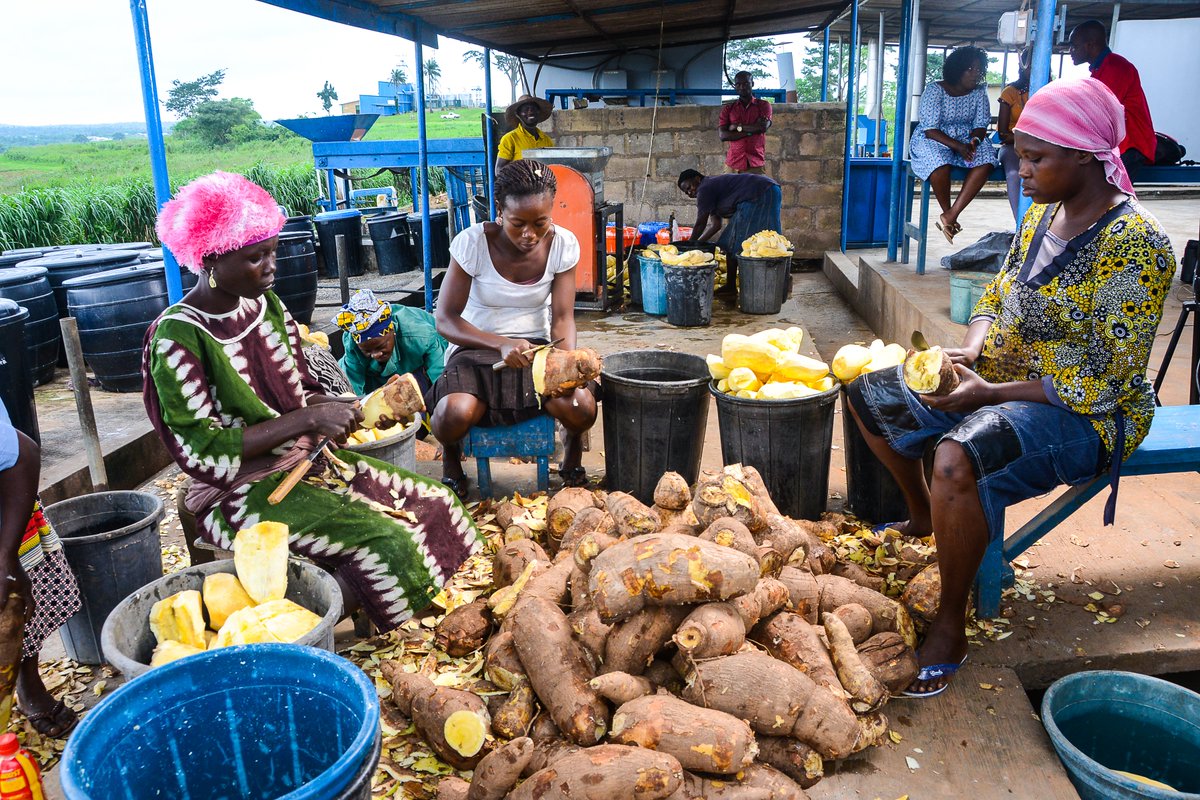As millions of children suffer from stunting and anaemia, nutritionists and farmers are turning to fortified crops as a cost-effective, sustainable solution.
The children’s ward of the University of Abuja Teaching Hospital in Gwagwalada is sometimes filled with mothers cradling frail infants with glassy eyes.
Malnutrition has been one of Nigeria’s chronic public-health challenges. This hardly derives from the lack of food but is linked to what nutritionists describe as ‘hidden hunger,” the chronic lack of vitamins and minerals in the diets of millions of people.
Statistics related to malnutrition in Nigeria are disturbing. According to UNICEF, 37% of Nigerian children under five are stunted (low height-for-age), 22% are underweight (low weight for age) and 7% are wasted (low weight for height).
The Global Alliance for Improved Nutrition (GAIN) further reports that over 62% of women of reproductive age in Nigeria suffer from anaemia—stemming from a deficiency in iron—which weakens immunity, impairs growth and threatens maternal health.
Yet the fallout goes beyond health. The World Bank estimates that malnutrition drains Nigeria’s economy by over $1.5 billion annually in lost productivity. The daily sight of mothers queuing to see a doctor in hospitals like Gwagwalada illustrates this crisis.
Biofortification to the rescue
In recent years, experts have hailed biofortification—the process of breeding staple crops to contain higher levels of essential nutrients—as a promising panacea. Unlike foods fortified with supplements, biofortified crops put nutrition directly into the traditional meals families already eat.
In lieu of white cassava, farmers now grow a yellow-fleshed variety packed with vitamin A. Similarly, rather than plain beans and maize, they can plant iron-rich beans and zinc-enriched maize that restore blood and energy and strengthen children’s immunity, respectively.
Scientists from the International Institute of Tropical Agriculture (IITA) and HarvestPlus, in partnership with the Federal Ministry of Agriculture, have spent years developing and promoting these crops.
Additionally, a study from 2021 indicates that vitamin A-biofortified (yellow) cassava significantly increased Retinol Activity Equivalents (RAE) intake and reduced vitamin A deficiency in Nigerian preschool children.
The promise of biofortification lies in its sustainability; once farmers adopt these crops, families consume them daily, with long-lasting health benefits.
Ifeoma Chukwuma, a senior nutritionist at the Gwagwalada clinic, is familiar with this dynamic. “Many of our patients are not hungry in the way outsiders imagine hunger,” she explains. “They eat cassava and garri every day; they eat maize, but these foods are filling without nourishing. That is why children arrive here weak, pale or unable to fight infections. Supplements and fortified foods exist, but they are expensive and sometimes unavailable.”
Lining the walls of her are charts depicting global malnutrition statistics. For Chukwuma, biofortification is a sustainable lifeline for the mothers and children she sees every week.
Among the distressed mothers in the children’s ward is Zainab Ahmed, whose two-year-old daughter, Amina, struggles with anaemia. According to the doctors, Amina’s diet—primarily consisting garri, tuwo and kunu (native Hausa dishes)—provided calories but little else.
“We are farmers,” Zainab says quietly. “We eat the food that we grow, but the doctors told me these do not give her blood. They said if we ate a balanced diet maybe my daughter would not be like this.”
For families like Zainab’s, food is about survival, not nutrition. Their diets rarely include fruits, vegetables or animal proteins because of cost. Chukwuma explains that biofortification offers a unique solution, bridging the gap between subsistence farming and balanced nutrition.
The fight starts from the farm
With the spike in malnutrition cases, doctors are less optimistic about progress. Dr. Peter Adeyemi, a paediatrician at the hospital, describes cases that haunt him. “We hand out supplements, but families cannot afford them regularly,” Peter Adeyemi, a paediatrician at the Gwagwalada hospital, explains.
“The truth is, the fight against malnutrition cannot be won in hospitals alone. It must be fought in farms and kitchens. If nutrients are in the foods people already cook like in fufu, in tuwo, in beans, then we prevent illness before it ever reaches us.”
Adeyemi echoes a prevailing argument that suggests biofortification is not a replacement for quality healthcare.
Country-wide, awareness is rising steadily. Over 1.5 million Nigerian farmers now cultivate Vitamin A cassava, with households leaning towards iron-rich beans. Zinc maize is also being piloted across northern states.
In 2021, the National Council on Agriculture and Rural Development (NCARD) approved the mainstreaming of staple crop biofortification into all agricultural interventions. This strategic shift is a major stride for improving nutrition and addressing hidden hunger.
Even as awareness is spreading, some households remain skeptical about biofortification, dismissing the yellow cassava as the inferior variety.
Limited access to the market is also cramping adoption. Farmers may not find ready buyers willing to pay more for biofortified crops. Government subsidies, awareness campaigns and integration into national nutrition strategies are necessary to scale up adoption. Without these, biofortification risks being confined to small pilot programmes.
Nevertheless, Chukwuma believes that biofortification holds some promise. “Imagine if every Nigerian family had vitamin A cassava in their diet. Imagine if every child grew up eating iron beans. We would see fewer blind children, fewer weak mothers and a stronger generation.”
Malnutrition remains a serious public health issue in Nigeria, driven predominantly by hidden hunger—a deficiency in essential vitamins and minerals rather than a lack of food availability. This has led to alarming statistics, with 37% of children under five being stunted and numerous women of reproductive age suffering from anaemia due to iron deficiency. This crisis not only affects health but also drains Nigeria’s economy significantly through loss of productivity.
In response, there has been a rise in using biofortification—a method of breeding crops to be richer in essential nutrients—as a sustainable solution. Unlike supplementation, biofortified crops, such as vitamin A-enriched cassava, iron-rich beans, and zinc-enhanced maize, can seamlessly integrate into traditional diets, boosting nutrition without altering eating habits. Initiatives led by institutions like the International Institute of Tropical Agriculture, with support from government entities, are promoting these nutrient-rich crops. Despite some skepticism and challenges in market access, these efforts are gaining traction, with over 1.5 million Nigerian farmers already cultivating vitamin A cassava.
However, barriers remain, including limited awareness and market adoption issues, where farmers face challenges in selling the biofortified crops. Government intervention through subsidies and awareness campaigns is needed to enhance adoption and ensure biofortification becomes a regular part of agricultural practices. Experts maintain that these nutrient-enriched crops can drastically reduce malnutrition rates and enhance the health and resilience of future generations if widely adopted.






